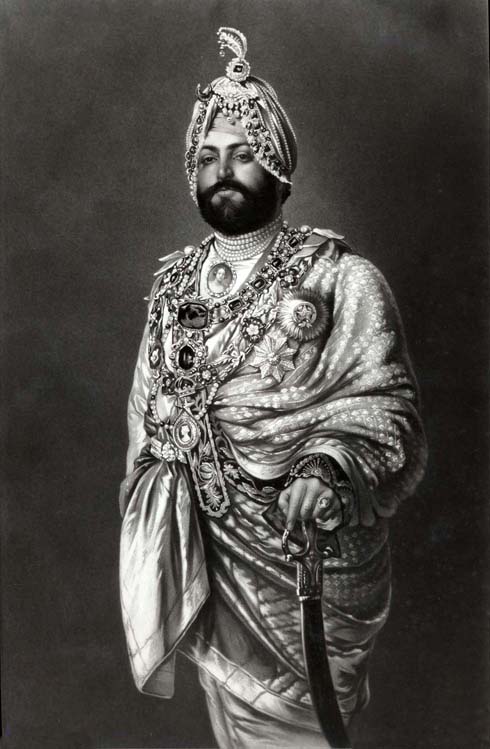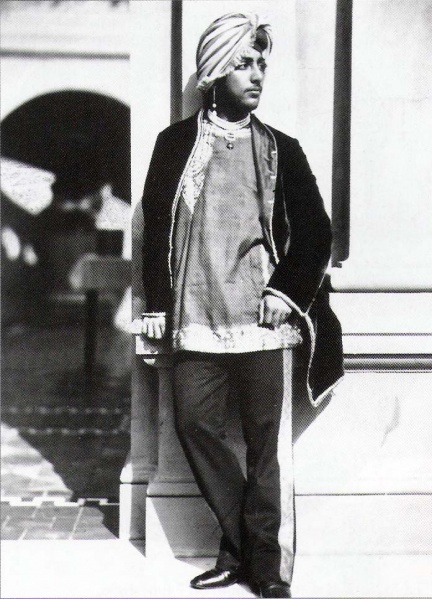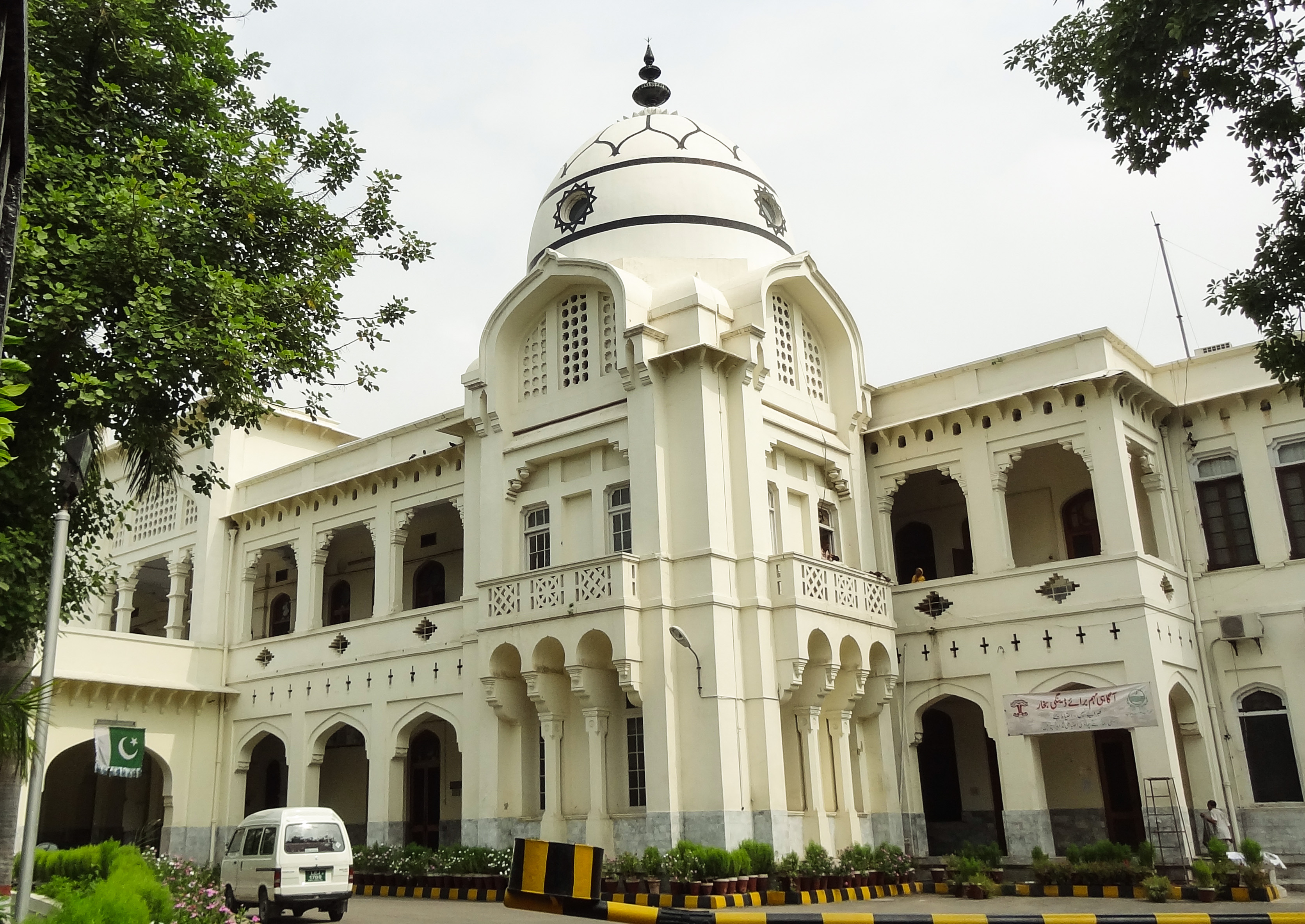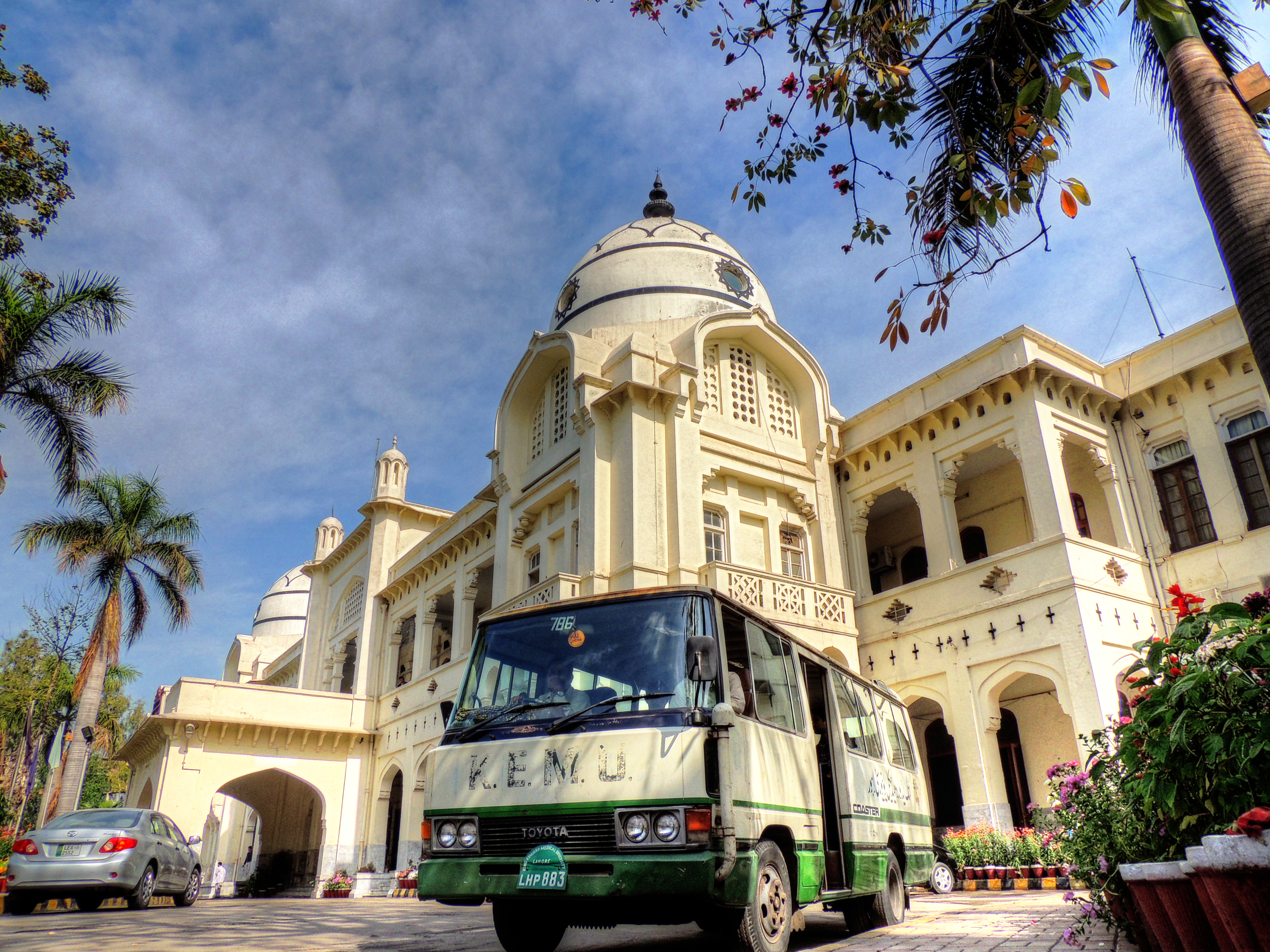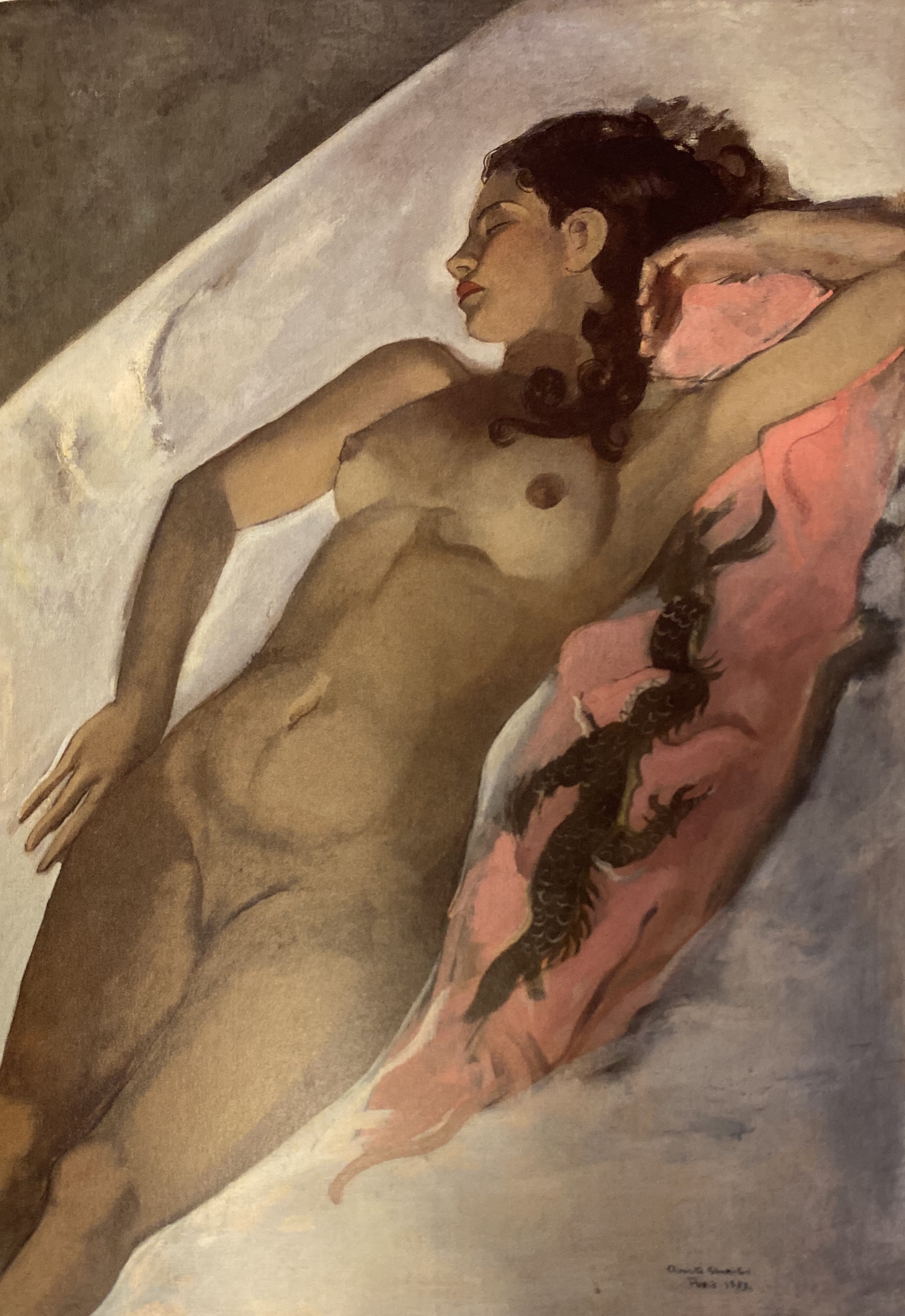|
Bamba Sutherland
Princess Bamba Sutherland (29 September 1869 – 10 March 1957) was the last surviving member of the family that had ruled the Sikh Empire in the Punjab. After a childhood in England, she settled in Lahore, the capital of what had been her father's kingdom, where she was a suffragette and a passionate advocate of self rule and independence of India. She was a close and personal friend of Indian revolutionaries whom she hosted like Lala Lajpat Rai. Biography Born as Bamba Sofia Jindan Duleep Singh, she was the eldest daughter of Maharaja Duleep Singh and his Egyptian first wife Bamba Müller. Bamba was the daughter of Ludwig Müller, a German merchant banker of Todd Müller and Company, and Sofia, his mistress, who was of Abyssinian (Ethiopian) descent. Bamba was born on 29 September 1869, in London. She led an unusual life as her father (the ruler of the Punjab) had been brought to Britain as a child under the care of the East India Company, after the close of the Second Anglo-Si ... [...More Info...] [...Related Items...] OR: [Wikipedia] [Google] [Baidu] |
Duleep Singh
Maharaja Sir Duleep Singh, GCSI (4 September 1838 – 22 October 1893), or Sir Dalip Singh, and later in life nicknamed the "Black Prince of Perthshire", was the last ''Maharaja'' of the Sikh Empire. He was Maharaja Ranjit Singh's youngest son, the only child of Maharani Jind Kaur. He was placed in power in September 1843, at the age of five, with his mother ruling on his behalf, and after their defeat in the Anglo-Sikh War, under a British Resident. He was subsequently deposed by the British Crown, and thereafter exiled to Britain at age 15 where he was befriended by Queen Victoria, who is reported to have written of the Punjabi Maharaja: "Those eyes and those teeth are too beautiful".Eton, the Raj and modern India By Alastair Lawson; 9 March 2005; BBC News. The Queen was godmother to several of his children. ... [...More Info...] [...Related Items...] OR: [Wikipedia] [Google] [Baidu] |
Elveden Hall
Elveden Hall is a large stately home on the Elveden Estate in Elveden, Suffolk, England. The seat of the Earls of Iveagh, it is a Grade II* listed building. It is located centrally to the village and is close to the A11 and the Parish Church. Currently owned by Arthur Edward Rory Guinness, 4th Earl of Iveagh. Early life of the house The date of the original house's construction is unknown but the estate is known to have been anciently appropriated by Bury St Edmunds Abbey. After the dissolution of the monasteries it was given by Henry VIII to the Duke of Norfolk. It subsequently passed through the ownerships of the Crisp and Tyrell families. The Georgian house at the core of the present house is thought to have been built c. 1760. In 1768 the estate was purchased by Admiral Augustus Keppel. He died without issue in 1796 and it passed to his nephew, the Earl of Albemarle, who sold it to MP William Newton in 1813. The Maharajah (1849–1894) In 1849, the Maharajah Duleep Sin ... [...More Info...] [...Related Items...] OR: [Wikipedia] [Google] [Baidu] |
Maha Singh
Maha Singh ( pa, ਮਹਾਂ ਸਿੰਘ, Mahaṅ Singh; 1760 – 15 April 1790 or 1756 – April 1792), also spelt as Mahan or Mahn Singh, was the second chief of the Sukerchakia Misl. He was the eldest son of Sardar Charat Singh and Sardarni Desan Kaur Warraich. He was the father of Sher-e-Punjab Maharaja Ranjit Singh. Upon the death of his father, Charat Singh, he succeeded to the leadership of the Sukerchakia Misl. His son Ranjit Singh succeeded him and established the Sikh Empire. He is known for his alliance with Jassa Singh Ramgarhia and for reducing the power of the Kanhaiya Misl l. Maha Singh married firstly, daughter of Sardar Jai Singh Mann, and secondly Sardarni Raj Kaur, daughter of Raja Gajpat Singh of Jind. Early life Maha Singh was born in a Sikh family to Charat Singh and his wife, Desan Kaur in 1756. Some sources say he was born in the year 1760. He had three younger siblings, Saher Kaur, Raj Kaur and Sahej Singh, who died in infancy. Maha Singh was b ... [...More Info...] [...Related Items...] OR: [Wikipedia] [Google] [Baidu] |
Distich
A couplet is a pair of successive lines of metre in poetry. A couplet usually consists of two successive lines that rhyme and have the same metre. A couplet may be formal (closed) or run-on (open). In a formal (or closed) couplet, each of the two lines is end-stopped, implying that there is a grammatical pause at the end of a line of verse. In a run-on (or open) couplet, the meaning of the first line continues to the second. Background The word "couplet" comes from the French word meaning "two pieces of iron riveted or hinged together". The term "couplet" was first used to describe successive lines of verse in Sir P. Sidney's '' Arcadia '' in 1590: "In singing some short coplets, whereto the one halfe beginning, the other halfe should answere." While couplets traditionally rhyme, not all do. Poems may use white space to mark out couplets if they do not rhyme. Couplets in iambic pentameter are called ''heroic couplets''. John Dryden in the 17th century and Alexander Pope in th ... [...More Info...] [...Related Items...] OR: [Wikipedia] [Google] [Baidu] |
Lahore Fort
The Lahore Fort ( ur, , lit=Royal Fort, translit=Shāhī Qilā, label=Punjabi language, Punjabi and Urdu) is a citadel in the city of Lahore, Pakistan. The fortress is located at the northern end of Walled City of Lahore, walled city Lahore, and spreads over an area greater than 20 hectares. It contains 21 notable monuments, some of which date to the era of Emperor Akbar. The Lahore Fort is notable for having been almost entirely rebuilt in the 17th century, when the Mughal Empire was at the height of its splendour and opulence. Though the site of the Lahore Fort has been inhabited for millennia, the first record of a fortified structure at the site was regarding an 11th-century mud-brick fort. The foundations of the modern Lahore Fort date to 1566 during the reign of Emperor Akbar, who bestowed the fort with a syncretic architectural style that featured both Islamic and Hindu motifs. Additions from the Shah Jahan period are characterized by luxurious marble with inlaid Persia ... [...More Info...] [...Related Items...] OR: [Wikipedia] [Google] [Baidu] |
Gora Kabristan Lahore Headstone Sutherland Bamba 1957
Gora may refer to: * Gora (surname) *'' Gora'', a Bengali novel by Nobel laureate Rabindranath Tagore * Gora (musical instrument) *''G.O.R.A.'', a 2004 Turkish comedy film *Goparaju Ramachandra Rao ("Gora", 1902–1975), Indian social reformer and atheist activist Places *Gora (region), in southern Kosovo and north-eastern Albania * Gora, Croatia, a village near Petrinja, Croatia * Góra (other), places in Poland * Gora, Russia, several rural localities in Russia * Gora (Kakanj), a village in Bosnia and Herzegovina * Gora (Vogošća), a village in Bosnia and Herzegovina * Gora, Krško, a settlement in the Municipality of Krško, Slovenia * Gora nad Sodražico (also known as Gora), Slovenia, a community and parish comprising the villages of Betonovo, Kračali, Janeži, Petrinci, and Kržeti * Gora Ardan, a peak in the western plains of Turkmenistan * Gora Cemetery (other) *Gōra Station is a terminal railway station on the Hakone Tozan Line as well as t ... [...More Info...] [...Related Items...] OR: [Wikipedia] [Google] [Baidu] |
Ranjit Singh
Ranjit Singh (13 November 1780 – 27 June 1839), popularly known as Sher-e-Punjab or "Lion of Punjab", was the first Maharaja of the Sikh Empire, which ruled the northwest Indian subcontinent in the early half of the 19th century. He survived smallpox in infancy but lost sight in his left eye. He fought his first battle alongside his father at age 10. After his father died, he fought several wars to expel the Afghans in his teenage years and was proclaimed as the "Maharaja of Punjab" at age 21. His empire grew in the Punjab region under his leadership through 1839. Prior to his rise, the Punjab region had numerous warring misls, misls (confederacies), twelve of which were under Sikh rulers and one Muslim. Ranjit Singh successfully absorbed and united the Sikh misls and took over other local kingdoms to create the Sikh Empire. He repeatedly defeated Afghan-Sikh Wars, invasions by outside armies, particularly those arriving from Afghanistan, and established friendly relat ... [...More Info...] [...Related Items...] OR: [Wikipedia] [Google] [Baidu] |
Bombay
Mumbai (, ; also known as Bombay — the official name until 1995) is the capital city of the Indian state of Maharashtra and the ''de facto'' financial centre of India. According to the United Nations, as of 2018, Mumbai is the second-most populous city in India after Delhi and the eighth-most populous city in the world with a population of roughly 20 million (2 crore). As per the Indian government population census of 2011, Mumbai was the most populous city in India with an estimated city proper population of 12.5 million (1.25 crore) living under the Brihanmumbai Municipal Corporation. Mumbai is the centre of the Mumbai Metropolitan Region, the sixth most populous metropolitan area in the world with a population of over 23 million (2.3 crore). Mumbai lies on the Konkan coast on the west coast of India and has a deep natural harbour. In 2008, Mumbai was named an alpha world city. It has the highest number of millionaires and billionaires among all cities i ... [...More Info...] [...Related Items...] OR: [Wikipedia] [Google] [Baidu] |
David Waters Sutherland
Prof David Waters Sutherland CIE FRSE (18 December 1872–19 April 1939) was an Australian physician who ran the King Edward Medical College in Lahore and married Princess Bamba Singh. Biography He was born in Buninyong on 18 December 1872, the son of Wilhelmina Waters and her husband, John Sutherland of Allendale, Victoria. He was educated at Creswick Grammar School, then Melbourne University. He studied medicine at the University of Edinburgh, Scotland, graduating with an MB ChB in 1893, then took the exams for the Indian Medical Service. He subsequently qualified for the post-graduate Doctor of Medicine (MD). He was also a member of the (English) Royal College of Physicians (MRCP). Originally attached to the Indian Army as part of the Indian Medical Service he went to Bengal as a Surgeon Lieutenant in 1894. He served in the Chitral Campaign of 1895. He later served in engagements at both Malakand and Panjkora. He was promoted to Major in 1905 and in 1919 was Consult ... [...More Info...] [...Related Items...] OR: [Wikipedia] [Google] [Baidu] |
King Edward Medical College
King Edward Medical University (KEMU) () is a public medical university located in Lahore, Punjab, Pakistan. Founded in 1860, the university is named after King Edward VII. Established by the British Raj, named as Lahore Medical School. In 1868, the University of Dublin granted students of the Lahore Medical School ”privilege similar to the granted to students from English schools”. In 1871, the university added Mayo Hospital as an affiliated hospital, replacing the existing Anarkali Dispensary. The same year the college became an affiliate of University of the Punjab, while in 1887, the university added Lady Aitchison Hospital as a second teaching hospital. After Pakistan's independence, the university became the only medical college in the province and in 2005 became a charter to award degrees in its own right. It has since gone through expansion, and oversees seven tertiary referral hospitals including the Lady Willingdon Hospital. In 2015, HEC published the 5th ranking ... [...More Info...] [...Related Items...] OR: [Wikipedia] [Google] [Baidu] |
Amrita Sher-Gil
Amrita Sher-Gil (30 January 1913 – 5 December 1941) was a Hungarian-Indian painter. She has been called "one of the greatest avant-garde women artists of the early 20th century" and a pioneer in modern Indian art. Drawn to painting from an early age, Sher-Gil started formal lessons at the age of eight. She first gained recognition at the age of 19, for her oil painting ''Young Girls'' (1932) (shown below). Sher-Gil depicted everyday life of the people in her paintings. Sher-Gil traveled throughout her life to various countries including Turkey, France, and India, deriving heavily from precolonial Indian art styles as well as contemporary culture. Sher-Gil is considered an important painter of 20th-century India, whose legacy stands on a level with that of the pioneers from the Bengali Renaissance, Bengal Renaissance. She was also an avid reader and a pianist. Sher-Gil's paintings are among the most expensive by Indian women painters today, although few acknowledged her work wh ... [...More Info...] [...Related Items...] OR: [Wikipedia] [Google] [Baidu] |
Shimla
Shimla (; ; also known as Simla, List of renamed Indian cities and states#Himachal Pradesh, the official name until 1972) is the capital and the largest city of the States and union territories of India, northern Indian state of Himachal Pradesh. In 1864, Shimla was declared as the summer capital of British Raj, British India. After Indian independence movement, independence, the city became the capital of East Punjab and was later made the capital city of Himachal Pradesh. It is the principal commercial, cultural and educational centre of the state. Small hamlets were recorded before 1815 when British forces took control of the area. The climatic conditions attracted the British to establish the city in the dense forests of the Himalayas. As the summer capital, Shimla hosted many important political meetings including the Simla Accord (1914), Simla Accord of 1914 and the Simla Conference of 1945. After independence, the state of Himachal Pradesh came into being in 1948 as a re ... [...More Info...] [...Related Items...] OR: [Wikipedia] [Google] [Baidu] |
